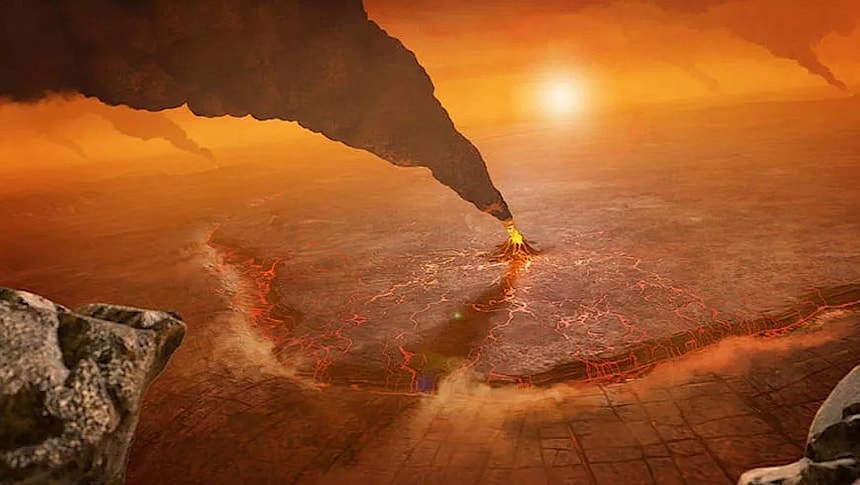If I were to ask you what you think humanity's landmark hip-hop song is, Missy Elliott's "The Rain (Supa Dupa Fly)" is probably not the first thing that comes to mind. Yet this is the hit American space agency NASA deliberately broadcast into space using the Deep Space Network (DSN).
DSN is what NASA uses to communicate with the many spacecraft it has spread throughout the solar system. It comprises three antenna complexes at Goldstone, California, Madrid, Spain, and Canberra, Australia - the locations were not chosen randomly, but because they are spaced equidistant from each other at about 120 degrees in longitude, allowing an almost uninterrupted view of the sky.
The network is usually used to command, track, and monitor the health of spacecraft. As of now, it seems that it is also a sort of interplanetary radio station. That's because this is not the first time the agency has sent songs into space.
Back in 2008, as it was about to commemorate the 40th anniversary of the day The Beatles recorded "Across the Universe," but also NASA's own half a century of existence, the agency broadcast the exact same song at the North Star, Polaris.
This time, for reasons that are far less spectacular (and, to be honest, quite unclear), NASA beamed its first hip-hop song into space in the direction of Venus. The planet was not randomly selected, but because it is the artist's favorite planet.
NASA says it chose Missy Elliott to make history this way because the singer "has a track record of infusing space-centric storytelling and futuristic visuals in her music videos."
The broadcast was initiated by the people at the Jet Propulsion Laboratory on Friday, July 12, at 10:05 AM PDT, using the California-based DSN antenna. The lyrics and music had to travel over 158 million miles (254 million km) at the speed of light (180,000 miles per second/300,000 kph).
Because of the huge distance to its target, the music took at least 14 minutes to reach its destination—and without someone there to receive and enjoy it, it is probably be lost forever.
Venus is a place in the solar system we'll probably hear a lot more about in the coming years. At least two high-profile American missions are in the works at the time of writing.
The first is the Deep Atmosphere Venus Investigation of Noble gases, Chemistry, and Imaging (DAVINCI) probe, set to leave for Venus no earlier than 2029. It will be tasked with having a look at the origin and evolution of Venus "in unprecedented detail from near the top of the clouds to the planet's surface. "
The second mission, an orbiter, is called Venus Emissivity, Radio Science, InSAR, Topography, and Spectroscopy (VERITAS), and should launch in 2031 aiming to "reveal how the paths of Venus and Earth diverged, and how Venus lost its potential as a habitable world."
The network is usually used to command, track, and monitor the health of spacecraft. As of now, it seems that it is also a sort of interplanetary radio station. That's because this is not the first time the agency has sent songs into space.
Back in 2008, as it was about to commemorate the 40th anniversary of the day The Beatles recorded "Across the Universe," but also NASA's own half a century of existence, the agency broadcast the exact same song at the North Star, Polaris.
This time, for reasons that are far less spectacular (and, to be honest, quite unclear), NASA beamed its first hip-hop song into space in the direction of Venus. The planet was not randomly selected, but because it is the artist's favorite planet.
NASA says it chose Missy Elliott to make history this way because the singer "has a track record of infusing space-centric storytelling and futuristic visuals in her music videos."
The broadcast was initiated by the people at the Jet Propulsion Laboratory on Friday, July 12, at 10:05 AM PDT, using the California-based DSN antenna. The lyrics and music had to travel over 158 million miles (254 million km) at the speed of light (180,000 miles per second/300,000 kph).
Because of the huge distance to its target, the music took at least 14 minutes to reach its destination—and without someone there to receive and enjoy it, it is probably be lost forever.
Venus is a place in the solar system we'll probably hear a lot more about in the coming years. At least two high-profile American missions are in the works at the time of writing.
The first is the Deep Atmosphere Venus Investigation of Noble gases, Chemistry, and Imaging (DAVINCI) probe, set to leave for Venus no earlier than 2029. It will be tasked with having a look at the origin and evolution of Venus "in unprecedented detail from near the top of the clouds to the planet's surface. "
The second mission, an orbiter, is called Venus Emissivity, Radio Science, InSAR, Topography, and Spectroscopy (VERITAS), and should launch in 2031 aiming to "reveal how the paths of Venus and Earth diverged, and how Venus lost its potential as a habitable world."







